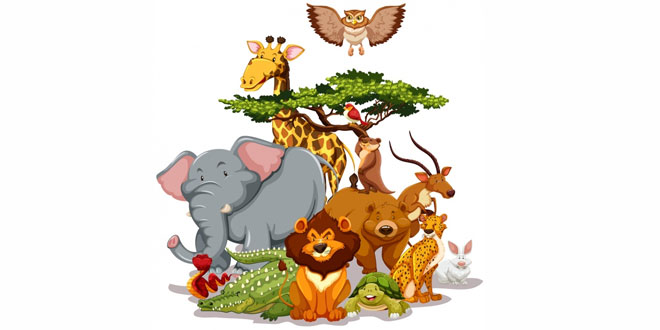NCERT 7th Class (CBSE) Science: Weather, Climate and Adaptations of Animals to Climate – Quiz
24 Multiple Choice Questions related to Weather, Climate and Adaptations of Animals to Climate – Quiz:
- Weather: The day-to-day atmospheric condition at a place.
- Climate: The average weather pattern that prevails over a long period of time in a place.
- Aestivation: The long sleeping period of animals during summer to escape the heat.
- Hibernation: A deep sleep that some animals go into, to survive the long and cold winters and scarcity of food.
Your Score:
Your Ranking:
Weather influences our lives in different ways. During summer, we switch on fans to keep ourselves cool, we use light colored clothes in order to reject the heat. During winter, we use dark colour clothes and wrap ourselves in warm clothes to protect us from cold environment. Similarly, during the rainy season, we use umbrella or raincoat as it may rain anytime. The weather of a place changes day after day and week after week. It is a complex phenomenon that may vary over very short periods of time (like hour to hour). Therefore, our daily activities are planned according to the weather predicted for a particular day. The daily report of weather is provided on television, radio and even in newspaper.
Weather: Weather, Climate and Adaptations of Animals to Climate – Quiz
It may be defined as the day to day condition of the atmosphere at a place with respect to the temperature, humidity, rainfall, wind speed etc.
- Temperature
The weather is mainly affected by the sun that produces heat and raise the temperature. The sun provides light as well as heat on the earth. It is necessary for the production of energy. The heat from the sun is absorbed by the earth’s surface, oceans and atmosphere which plays an important role in determining the weather of any place. Therefore, it is clear that change in weather is caused due to the sun because the changes occurring in the sun’s heat will change the atmosphere more frequently. The time of sunrise and sunset also changes throughout the year. - Rainfall
The amount of water droplets that fall back on the earth after condensation of water vapors is called rainfall. When the temperature is too low, these droplets in the cloud get freezed into crystals of ice and comes on the earth as snowfall. During winters, the temperature falls after sunset causing condensation of water vapors near the ground. These droplets hang in the air to form fog.
Note: Rainfall is generally measured in millimetre. The instrument that is used to measure the rainfall is called rain gauge. It is a measuring cylinder with a funnel kept on its top which collects the rainwater. The rainwater collected in the measuring cylinder gives the measure of rainfall. - Humidity
It is defined as ‘the amount of water vapour in air which causes dampness of air’. Air has the ability to hold certain amount of water vapour. The capacity of air to hold water increases with rise in temperature and falls if heavy rainfall occurs. The humidity is measured by the instrument called hygrometer which consists of two thermometers.
The bulb of one thermometer is wet and the other is dry. - Wind Speed
It is caused due to the difference in air pressure. During summer, the wind blows from Indian ocean and Bay of Bengal and causes rain in India while during winter, it blows from the mountain of north India towards northern plain and causes cold weather (winter season).
Weather Prediction: Weather, Climate and Adaptations of Animals to Climate – Quiz
The prediction of weather is done by scientists, called meteorologist, who study the changes in the weather. The weather is predicted by studying the patterns of weather and factors affecting them. The science which deals with the study of weather is called meteorology. In India, the weather reports are prepared by the Meteorological Department of Government. This department collects the data of temperature, wind, etc., and predicts whether on television or radio or newspaper. The weather report is recorded everyday in the form of graph and published in a table form showing readings of different elements of weather.
Difference in Time of Sunrise and Sunset
There is the difference in the time of sunrise during summer and winter. In summer the sun rises earlier in the morning and the sun sets late in the evening during the month of June, while sun rises late and sets early in the month of December.
Therefore, days are longer and night shorter in summers while day is shorter and night is longer during
winter.
Climate
‘The average weather pattern taken over a long time, is called the climate of that place.’ Different places in the world have different types of climate. The annual record of long term average temperature and rainfall at a particular place is called climate chart. It gives an idea about the climate at a particular place during a specific period of the year. The major factor which determines the climate of a place is called latitude (imaginary lines on earth).
 Class Notes NCERT Solutions for CBSE Students
Class Notes NCERT Solutions for CBSE Students



